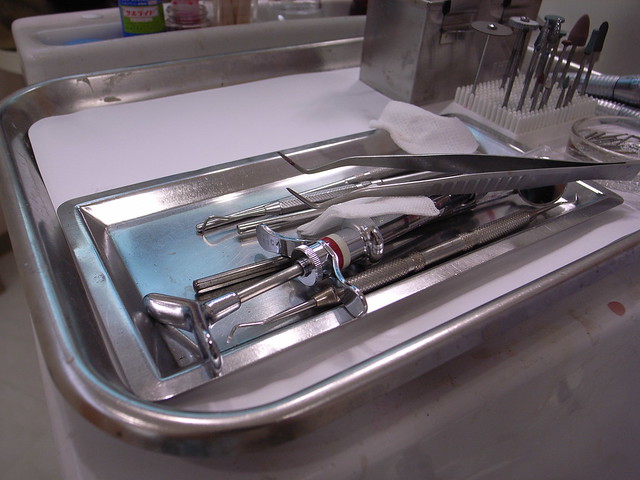After or during having wisdom teeth surgery complications are a possibility. One of these complications listed on http://www.teethremoval.com/complications.html is displacement of a foreign body such as a dental instrument. Usually this is seen with a dental needle that breaks off but can also be seen with the dental drill bit or the blade of an elevator. A case is described in the article titled “A unique post-operative complication” written by Modgill and Mani appearing in Oral Surgery in 2016 (vol. 9, pp. 15-18) which describes a fractured elevator tip during removal of an upper wisdom tooth.
In the article the authors say they are aware of only two prior cases of fracture of an instrument during teeth removal and that such retained fractured instrument fragments can cause pain or lead to an infection. In the article they describe the case of a 29 year old female who had all four wisdom teeth removed while under general anesthesia. The two upper wisdom teeth were removed using simple elevation. The patient did not report anything out of the ordinary after the surgery until 2 months after the surgery where she described seeing a piece of metal falling from the upper part of her mouth while rinsing her mouth. She went back to see the oral surgeon and they examined all four wisdom teeth sites but observed they had all healed normally. The patient had no complaints about any discomfort. She gave the dental team the metal piece that fell from her mouth. After examining the metal fragment it was determined to be 4 mm in length and the tip of a Coupland’s 1 elevator. The dental team tracked down the elevator that had been used during her surgery and found it had a fractured tip. The patient did not require any treatment and there was no evidence of any additional fragment still in the mouth that had not already fallen out.

The authors say that the elevator likely just wore out from repeated use over time which caused the fracture. They do not feel that any excessive force was applied during the extraction of the women’s upper right wisdom tooth. However, they do not completely rule out incorrect surgical technique. The authors also question why the fracture was not detected following the surgery. In the practice the women had the wisdom teeth surgery in it was routine to examine all instruments before and after surgery. However, the authors feel the fracture was subtle and it was likely just not closely inspected enough and missed. The authors also feel that it took 2 months for the patient to notice because the fractured elevator tip was lodged into her alveolar socket and was rendered immobile and it took time during the healing process for the tip to become dislodged.
As a result of this case the authors recommended taking several steps to prevent this from occurring. This includes having the surgeon check all instruments carefully before and after surgery and irrigating any extraction site after surgery with saline. They also suggest having the dental assistance carefully check the room the surgery occurs in before and after surgery.
